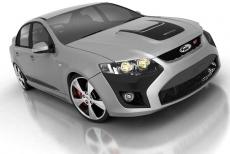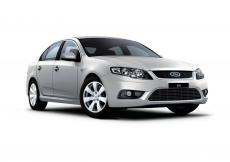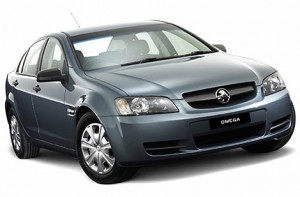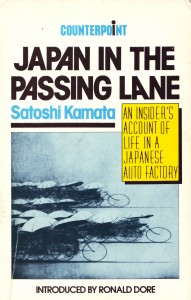 Yesterday Ford took the wraps off the new FG Falcon.
Yesterday Ford took the wraps off the new FG Falcon.
New Australian developed and built cars come along only very rarely; Ford took the unusual step of releasing the car on a Sunday so that it could gain precious free airtime on the Sunday night TV news and in the Monday papers.
Away from my home base, I watched the Sunday night Channel Nine TV news in Adelaide with interest. How breathlessly and non-critically would they report the release of the new car?
The report was relatively short but it was what followed that had me gobsmacked.
 Immediately after the report on the Falcon finished, the Nine news moved straight to a segment on the booming sales of the hybrid Toyota Prius, and the way in which some individuals are now converting their cars to battery electric power. The station interviewed several Sydney electric car enthusiasts and presented a glowing report on the cars. Phrases like ‘fuel economy’, ‘greenhouse gas emissions’ ‘oil consumption’ and ‘cost to run’ sprinkled the report.
Immediately after the report on the Falcon finished, the Nine news moved straight to a segment on the booming sales of the hybrid Toyota Prius, and the way in which some individuals are now converting their cars to battery electric power. The station interviewed several Sydney electric car enthusiasts and presented a glowing report on the cars. Phrases like ‘fuel economy’, ‘greenhouse gas emissions’ ‘oil consumption’ and ‘cost to run’ sprinkled the report.
The juxtaposition couldn’t have been a bigger slap in the face for Ford: even the dimmest viewer could not have missed the implicit comparison.
Today, on the Monday after the Falcon’s release, my emailed News.com.au update doesn’t have a single mention of the new Falcon.
Imagine how different the news reports would have been if Ford had released a car with breakthrough fuel economy and lower greenhouse gas emissions. A turbo diesel engine, or a downsized six cylinder turbocharged to gain efficiency.
Instead we have launch control – and even more power, torque and weight. Oh yes, and a fuel consumption improvement that is nominal to say the least.
It’s very hard to believe that the Falcon will not go the way of the Mitsubishi 380 – and for much the same reasons. High quality engineering directed in completely the wrong direction, aiming at a target that started to move a decade ago and has now gone…
(See also this blog)

 Julian Edgar, 50, has been writing about car modification and automotive technology for nearly 25 years. He has owned cars with two, three, four, five, six and eight cylinders; single turbo, twin turbo, supercharged, diesel and hybrid electric drivelines. He lists his transport interests as turbocharging, aerodynamics, suspension design and human-powered vehicles.
Julian Edgar, 50, has been writing about car modification and automotive technology for nearly 25 years. He has owned cars with two, three, four, five, six and eight cylinders; single turbo, twin turbo, supercharged, diesel and hybrid electric drivelines. He lists his transport interests as turbocharging, aerodynamics, suspension design and human-powered vehicles.






